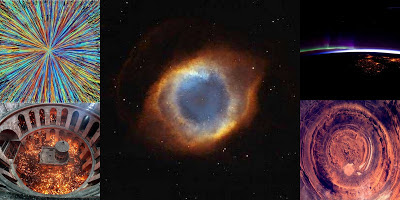27.05.2012 18:25
Translated from Bulgarian
How We Have Been Imposed Upon
The Papal-Masonic Calendar
The Papal-Masonic Calendar
zlatnavoda5
/ 27 December 2014
- What is the so-called old and new [calendar] style,
within the Orthodox church calendar?
- What is the so-called old and new [calendar] style,
within the Orthodox church calendar?
Author:
Tatiana Machkovska
Why is it that while some Christians greet one another with Christ's Nativity, others are still fasting? It's about the willful anti-canonical change of the church calendar, which has torn apart the universal liturgical unity of Christians and has opened the way for practices and trends [that are] damaging for the Church. On February 1st the Bulgarian Orthodox Church honored the memory of St. Great Martyr Tryphon. Winegrowers, however, shall make the ritual cutting of theirs on the 14th – the date on which the feast was celebrated prior to the so called calendar reform in the Bulgarian Orthodox Church [BOC]. It will be the same on May 24th : state and society shall celebrate the St. brothers Cyril and Methodius, while the Church shall have done so 13 days earlier, hardly noticed by anyone. Divided all like this are the church and the civil celebrations on November 1st, as well, the Feast of St. Ivan of Rila and , also, the Day of the Leaders of the Bulgarian National Revival, just as well as on December 8th – the Students' Day [in Bulgaria] for no other reason but the fact of the church veneration of the patron of the Sofia University St. Clement of Ohrida.
Jesus Christ
(The Spear of Destiny
or The Holy Lance of Longinus)
or The Holy Lance of Longinus)
Why this confusion? Who profits from
the Church isolation from public life, from the tearing asunder of the age-long
bond between liturgical celebration of the saint and the folk feast in his
honor? Why is it that while some Christians greet one another with Christ's
Nativity, others are still fasting? This question opens up a wound bleeding for
decades in the Orthodox Church, the so called "OLD [Calendar] style" and "New
[Calendar]
style". In fact, it boils down to a willful anti-canonical change of the
church calendar, It's about the willful anti-canonical change of the church
calendar, which has torn apart the universal liturgical unity of Christians and
has opened the way for practices and trends [that are] damaging for the
Church.
In 1572 Pope Gregory – ambitioned
to raise up Vatican's shattered prestige, introduced a new system of chronology,
moving dates forward with 10 days, in order to make up for the "lagging
behind" of the then current Julian calendar. Later, additional 3 days were
added and the gap between the two calendar today is 13 days. Should one delve
in specialized literature, however, one will find out that the famous
scientific advantage of the new Gregorian calendar is but a myth. This
calendar is based on the long rejected by science geocentric system, according
to which the Sun revolves around the Earth, and therefore the tropical
year – it has adopted as a benchmark – is a conditional, imaginary
value [quantity].
Conversely, the Julian calendar is cosmo-centric and its base – the Sidereal year is a real-term
value equal to the total period of rotation of the Earth around the Sun.
Therefore all astronomical and historical-and-chronological studies related to
long periods of time, are made after it, and not after the New Calendar.
The history of the so called New [Calendar]
style imposing is a string of intrigues and falsifications. The Papal reform was
recognized even back then to be meaningless by the Sorbonne, the Vienna and
other universities, as well as by a number of astronomers as Giordano Bruno and
Galileo. Copernicus refused to take part in its preparations, and since his
teaching threatened to expose its pseudo-scientificity, it was prohibited. But
political pressure and adroit Papal (actually – Jewish! ed. Grigor Simov) propaganda had
their say – and
the new calendar gradually conquered the world and its "scientific"
advantage and accuracy are today implicit.



